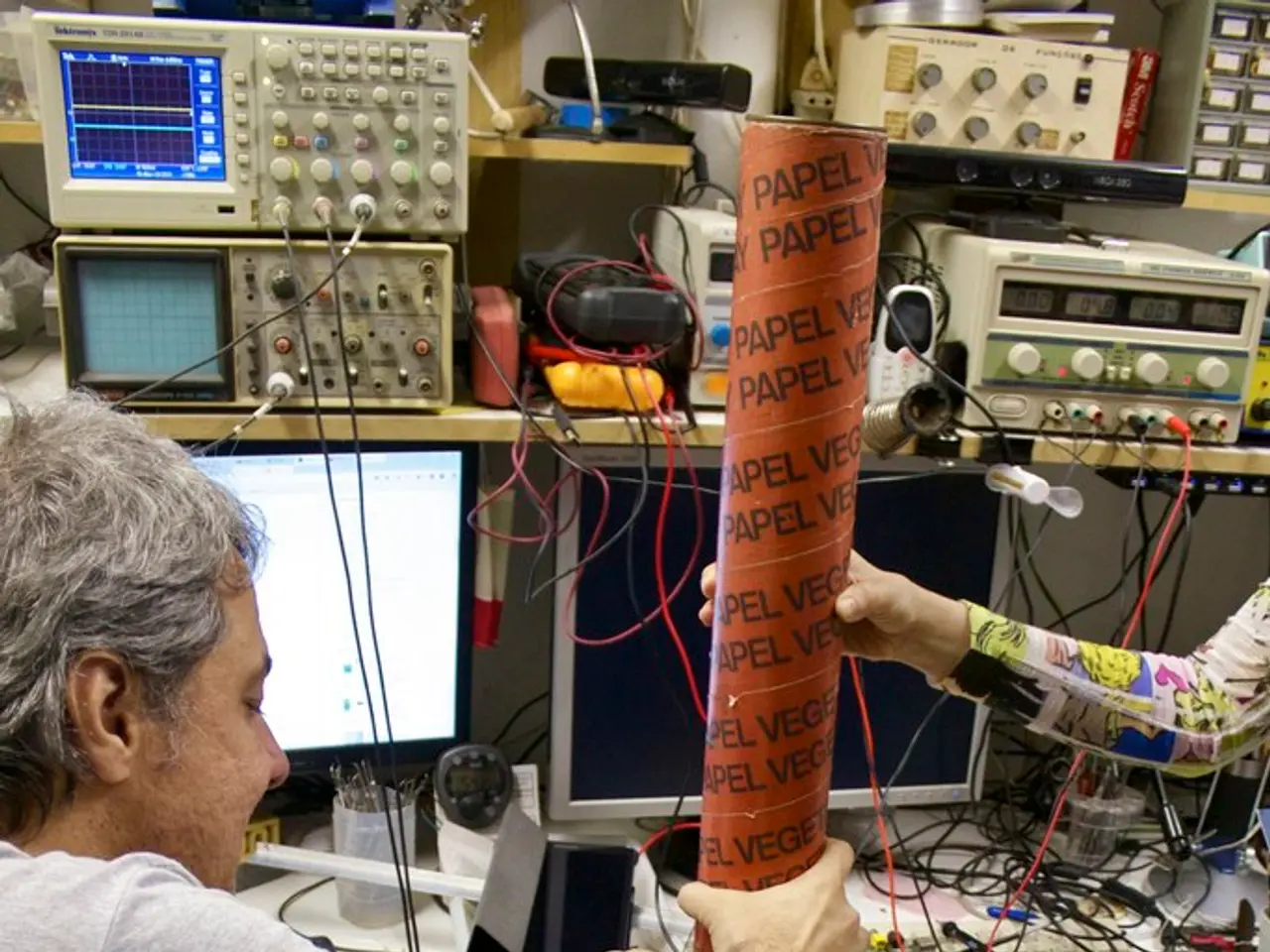Brain scientists reveal the mechanisms behind performing multiple tasks while strolling
In a groundbreaking study published in the journal NeuroImage, scientists at the Del Monte Institute for Neuroscience at the University of Rochester have uncovered fascinating insights into how the human brain functions during everyday activities, particularly when multitasking.
The research, led by Dr. Edward Freedman, involved the use of the Mobile Brain/Body Imaging (MoBI) system, a cutting-edge technology that combines virtual reality, brain monitoring, and motion capture technology. The study was conducted in the Del Monte Institute's Frederick J. and Marion A. Schindler Cognitive Neurophysiology Lab.
The MoBI system was used to better understand the brain's functions in everyday life. During the study, participants were asked to walk on a treadmill or manipulate objects on a table while 16 high-speed cameras recorded their positions with millimeter precision and simultaneously measured their brain activity.
Interestingly, the researchers found that participants' walking patterns improved when they performed a cognitive task at the same time, indicating more stability. This suggests that the brain is flexible and can take on additional burdens while multitasking.
The study also provided insight into how a young healthy brain can switch tasks. Brain changes were measured between the cued tasks, showing a greater neurophysiological difference during more difficult tasks. This highlights the brain's ability to prepare and execute tasks based on difficulty level.
The findings of this study could have significant implications for understanding older adults and those with neurodegenerative diseases. The researchers believe that their findings could help understand what's going wrong in a brain with a neurodegenerative disease like Alzheimer's disease.
The next stage of the research is expanding it to include a more diverse group of brains. The study was funded by the Eunice Kennedy Shriver National Institute of Child Health and Human Development and the Del Monte Institute for Neuroscience Pilot Program.
David Richardson, an MD/PhD student, was the first author of the study. Other authors include Dr. John Foxe, Dr. Kevin Mazurek, and Dr. Nicholas Abraham.
The study's findings on task switching in young healthy brains could be applied to understand the brain's flexibility in performing multiple activities in old age, a topic that the researchers from the Leibniz Institute for Neurobiology (LIN) are currently investigating.
In conclusion, this study provides valuable insights into the brain's flexibility and its ability to multitask, offering potential avenues for future research into neurodegenerative diseases and brain function in older adults.
Read also:
- Peptide YY (PYY): Exploring its Role in Appetite Suppression, Intestinal Health, and Cognitive Links
- Toddler Health: Rotavirus Signs, Origins, and Potential Complications
- Digestive issues and heart discomfort: Root causes and associated health conditions
- House Infernos: Deadly Hazards Surpassing the Flames








